Topics: Commentary, Computer Science, Consumer Electronics, Robotics
Robot makers slow to address cyber risk: researchers, Jeremy Wagstaff, Reuters Science
Topics: Commentary, Computer Science, Consumer Electronics, Robotics
Robot makers slow to address cyber risk: researchers, Jeremy Wagstaff, Reuters Science
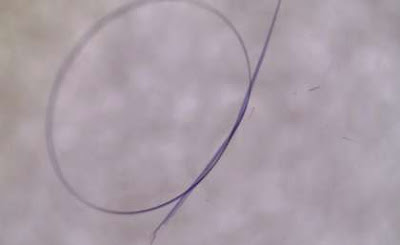 |
| Credit: University of Queensland |
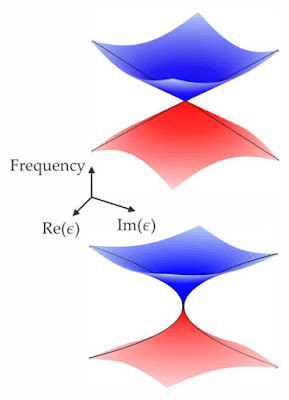 |
| Image Source: Link below |
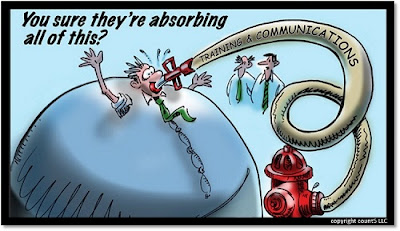 |
| Image Source: An article on LinkedIn by Linda Morales |
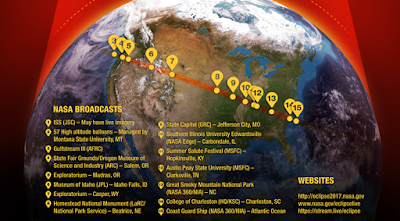 |
| Image Source: NASA.gov |
Topics: Eclipse, NASA, Space, Space Exploration
Eclipse Live Stream
NASA TV’s - Eclipse Across America: Through the Eyes of NASA
Related links:
Eclipse Live, NASA.gov
Total Solar Eclipse 2017: Here Are the Best Live (Video) Streams, Sarah Lewin, Space.com
PRESS RELEASE
Total Solar Eclipse African American Style: Black Suns: An Astrophysics Adventure
Black Suns: An Astrophysics Adventure, a documentary about chasing eclipses and science dreams, chronicles the lives of two globe-trotting astrophysicists, Dr. Alphonse Sterling and Dr. Hakeem Oluseyi, as they follow/document the two solar eclipses that occurred in 2012. The film is hosted by award-winning cultural astronomer Dr. Jarita Holbrook. Black Suns premiered on Friday, June 9 at the 7th Annual Art of Brooklyn Film Festival, where it won the Jury Prize. There will be a screening at the AAS HEAD meeting in Sun Valley on Sunday, August 20. It will be screening August 26 @ 13:40 at the Bronzelens Film Festival in Atlanta (Auburn Avenue Research Library on African American Culture and History 101 Auburn Ave NE).
For this eclipse weekend we are offering a preview streaming special for $3.99 on Vimeo (https://vimeo.com/ondemand/blacksunseclipse).
Dr. Alphonse Sterling (http://solarscience.msfc.nasa.gov/people/sterling/) of the NASA Marshall Space Flight Center, currently stationed in Japan: a man who had early success in the U.S., but left his home country to further cultivate his wide-ranging interests.
Dr. Hakeem Oluseyi (https://www.aps.org/careers/physicists/profiles/oluseyi.cfm) of the Physics & Space Sciences department at the Florida Institute of Technology: a scientist who beat all the odds -- poverty, homelessness, single parent, poor early education, gang warfare -- to get to where he is today.
Dr. Jarita C Holbrook (https://www.facebook.com/drjaritaholbrook/)
Scientist and cultural anthropologist, Dr. Holbrook’s films include “Hubble’s Diverse Universe,” (HDU, exec prod/interviewer/editor, 2010) http://www.HDUmovie.com and "The Micro-X Rocket Project" (exec prod/interviewer/co-director, in production).
Black Suns explores how and why the two men became scientists, their opposing paths and personalities, their struggles as minorities in a STEM (Science, Technology, Engineering, Mathematics) field, and their noteworthy accomplishments to date.
Why Is Black Suns Important?
Black Suns is for a general audience, but it is being created for our future – America’s children – especially those underserved communities whose math and science talents might be overlooked. The two scientists personal unveilings will intrigue and engage young people in these communities. Further, Alphonse and Hakeem exhibit different styles and personalities, dispelling the belief that only one type of person can become a successful scientist. Therefore, by following the two astrophysicists as they chase the two eclipses, it is the filmmakers’ goal to motivate young people so that they seek out their own incredible scientific journeys.
Follow the adventures on:
Twitter @blacksunsdoc
And on Facebook blacksunsdoc/
 |
| Image Source: See link [2] below |
Topics: Astronomy, Astrophysics, Eclipse, Moon, NASA
1. Amazon Is Warning People Not To Use Some Solar Eclipse Glasses That Were Sold On The Site, Leticia Miranda, consumer affairs reporter BuzzFeed News
2. Reputable Vendors of Solar Filters & Viewers, Solar Eclipse 2017, NASA
Now Mr. Hayashi can't complain about there being no other famous black creatives than Delany and Butler.
http://deadline.com/2017/08/nk-jemisin-the-fifth-season-book-developed-tv-series-tnt-1202150542/
Now who says diversity doesn't sell?! If some yesteryear agent says that, throw this article in their face and say "Are you sure? Now get me TNT's president and NO I won't hold!"
Of course, this assumes TNT won't screw this up like they did the TFTC revival.
 |
| Image Source: European Society of International Law, Vol 4, Issue 1 Editorial board: Anne van Aaken (editor-in-chief), Jutta Brunnée, Başak Çali, Jan Klabbers |
Please help spread the word about this campaign!
| Image of the 3-D droplet bioprinter, developed by the Bayley Research Group at Oxford, producing mm-sized tissues Credit: Sam Olof/ Alexander Graham |
The driving force behind this comic book gaming adventure is the Black experience. Their conflicting hopes, dreams and visions of a better future and a brighter tomorrow are dramatized in a scintillating voyage between comic books and video games. Move over pop culture dinosaurs, Ultimate Voyages promises to restore its readers, gamers and adventurers to their rightful place. No more sitting in the balconies or at the back of the bus. Its novelty is in its reimagining the world or the United States, for that matter, as the home of the free and land of the slave. It delivers a stretch of storylines and character building levels that are fun and engaging for those brave enough to enter its dimension. The story ventures out with Ultimate Voyages through Language and History, followed by its sequel The UHURU Initiative: Revenge of the White Gaud, then drops you in the driver’s seat in a World of Ultimatums, pulling you back in with the yet to be released title Courage to Succeed. Created and produced by a private individual fed up with the lack of inclusion and connection he felt with popular culture.
 |
| Study: More than 6 million could die early from air pollution every year, Azadeh Ansari, CNN |
 |
| NATIONAL PARKS SERVICE |
A second part of the successful book "Moon of Pluton," written by Venezuelan author Ángel David Revilla, better known by his readers as Dross Rotzank, tells how the creation of his latest book and some peculiarities of itself.
Before publishing my first book, I had already written this second part because writing is a passion for me, I'm in love with it. In fact, I opened the Youtube channel with the very premeditated and treacherous idea that publishers would listen to me. Although I later fell in love with this platform for everything it has given me.
The Ysaak War," which began as a short story, but, word for word, became a novel of greater encouragement. "I like to sail on a raft and get into the open sea, and find out how far I'll go. I want to know what I will think of, how I will solve situations ... see what happens. 'The Ysaak War' when I was a story I did not like the end so much, so I added, changed and corrected. So I write, without planning, I enjoy it as much as possible.
The novel, besides being science fiction, mixes the fantasy and goes deep into the characters and their conflicts. For Dross, these qualities relate to the commitment to their readers: to offer the best story.
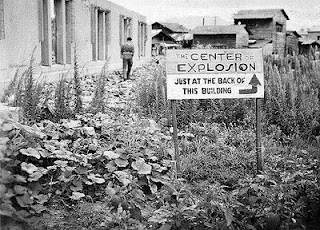 |
| Image Source: [1] |
 |
| Housewives and children were incinerated instantly or paralysed in their daily routines, their internal organs boiled and their bones charred into brittle charcoal. [1] |
SHOT-OUT to M. Haynes for forwarding this exciting news!
MOTHER is coming...
...that's right, Octavia Butler, the mother of Black science fiction, is coming to a television near you through Ava Duvernay! Early yesterday it was announced that Duvernay would be creating a television series based off Octavia Butler's novel, Dawn. This marks the first time Butler's work makes a television appearance, and hopefully Mother Butler will once again make way for other Black speculative authors to follow in her footsteps! Take a look at the article here and set your DVRs now!
https://shadowandact.com/ava-duvernay-octavia-butler-dawn-victoria-mahoney-macro